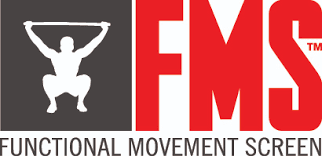Experts estimate that as much as 80% of the population will experience a back problem at some point in their life and one-half of all working Americans admit to having back pain symptoms each year. It is a growing issue in today’s society, and a main contributor is the increase in sedentary lifestyles. Back pain ranges from acute to chronic; acute being short term (less than 1 month), subacute lasting between 1-3 months and chronic lasting for more than 3 months. It can be described as a mild discomfort, to a constant dull achy pain, to an intense sharp pain. Most commonly the pain is attributed to mechanical issues dealing with the muscles, ligaments, joints, and nerves of the spine. Being aware and conscious of your day-to-day habits that impact your back health can keep you a step ahead.
One such habit is airplane travel as more and more Americans are flying for leisure and business each year. On average, every day over 8 million people fly. Traveling through busy airports and sitting on long plane rides can put an immense amount of stress and discomfort on the body. Whether you’re dealing with chronic or acute back pain, or maybe none at all, flying smart can help avoid later complications. Read below for some important ideas and tips to keep in mind the next time you prepare for take-off.
Plan Ahead:
- Try to book flights at off peak times to avoid crowded flights and allow for a smoother experience. Book flights with shorter in-flight connections or layovers times, if applicable.
- When given the option to choose your seat, select an aisle seat as it provides the easiest way to get up and move about the cabin during the flight.
- Keep in mind certain rows on planes do not recline; these usually include the very last row and the row in front of an exit row.
- Invest in lightweight spinner luggage that does not require you to tip it and pull it behind you. Pack light as heavy luggage can cause or aggravate back pain by straining muscles and joints.
Boarding:
- Be aware of your surroundings. Most of us are not typically used to being packed into a small tight space with little room to move, so take into account the proper mechanics with each movement.
- Lift luggage in stages. Back injuries often occur at the end of one’s range of motion when lifting a heavy item. First, lift your luggage onto the top of a seat. Then, in a separate motion, lift it into the overhead bin. Reverse the process when removing the luggage at the end of your flight.
- Bend at the knees rather than the back and use leg muscles to lift the luggage.
- Minimize twisting the torso while lifting. Pivot with the feet instead.
Taking Your Seat:
- Create length in your spine and watch your posture. Position yourself all the way back in your seat, bending at the hips to lower yourself down. Keep your shoulders back and avoid slouching or hunching forward. Keep your feet firmly resting on the floor or a footrest if need.
- Bring a travel pillow for rest and reading time to help avoid neck strain.
- For lower back pain, a lumbar support pillow can be used to help prevent slouching and to keep your spine straight. Self-inflating lumbar supports are great as they can easily become flat for easy packing. If you don’t have one, ask for a pillow or use a rolled up jacket, sweater, or blanket to provide support behind your lower back.
- Fasten the lap belt over hip bones. This will secure your back in the most ideal posture for flying to keep the lower spine from going into too much extension or flexion. Relax and allow the seat belt to do the work. Never place the lap belt above or on your belly.
During The Flight:
- Get up and move as much as possible! Sitting in one position for long periods of time can stiffen the back muscles and stress the spine, which can make back pain much worse. You should get up at least every 30 minutes, especially on longer flights.
- While standing, make sure to loosen up those joints and muscles that have been inactive. Go to the back of the plane if you can and do some gentle stretches. Movement stimulates circulation, allowing blood to bring important nutrients and oxygen to the structures of the back and legs.
Simple stretches and exercises to do during the flight:
- Seated push offs: this can be done by creating fists and using them to push your body up off of the seat to a slight raise. Engage your core and round head into the chest; this will stretch your back muscles.
- Figure 4 Stretch: cross one leg over the top of the knee of the other leg to create a “figure four.” Then lean your body down towards your legs to create tension in your glutes until you feel a stretch. Hold this stretch for 20 seconds, then repeat 3 times for each leg.
- Sitting hamstring stretch: Sit at the edge of your seat and straighten one leg in front of the body with the heel on the floor. Then, sit up straight and try pushing the navel towards the thigh while keep the back arched, without leaning the trunk of the body forwards. Hold this stretch for 20 seconds, then repeat 3 times for each leg.
- Air circles: gently create circular movement in the shoulders, wrists and ankles; this can be done in your seat or standing.


